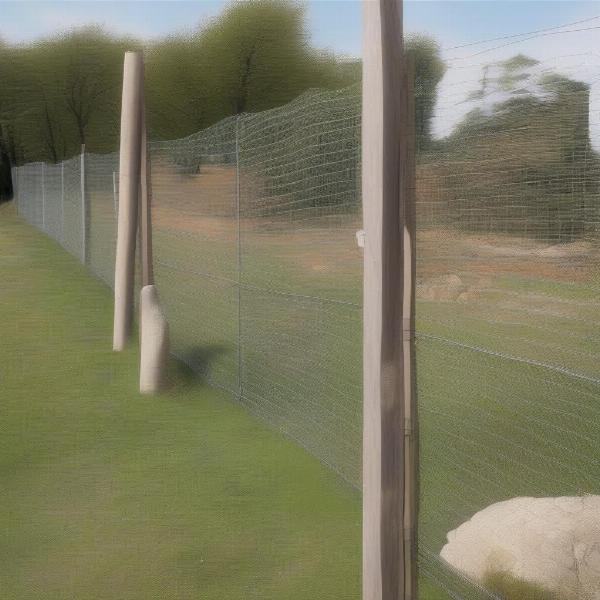An enclosed porch offers a wonderful space for your dog to enjoy the outdoors while remaining safe and secure. However, ensuring the porch is truly “escape-proof” requires careful planning and attention to detail. This article will guide you through creating an enclosed porch that provides both comfort and containment for your furry friend, covering everything from choosing the right materials to addressing potential escape routes.
Choosing the Right Fencing for Your Dog-Proof Porch
The foundation of a dog-proof porch lies in its fencing. Consider your dog’s size, breed, and temperament when selecting materials. For smaller dogs, a sturdy wire mesh might suffice, while larger, more determined breeds may require stronger options like wood or composite fencing. Ensure the fencing is tall enough to prevent jumping and securely anchored to prevent digging or pushing through.
Preventing Digging and Climbing
Even with a secure fence, some dogs are expert diggers or climbers. To deter digging, consider burying chicken wire or hardware cloth beneath the fence line. Alternatively, you can line the perimeter with large rocks or pavers. For climbers, adding an inward-leaning extension to the top of the fence can be effective.
 Preventing digging and climbing escapes on a dog-proofed porch.
Preventing digging and climbing escapes on a dog-proofed porch.
Gate Security: The Weakest Link
The gate is often the most vulnerable point of an enclosed porch. Choose a gate with a secure latch that your dog cannot easily open. A double latching system or a lockable gate is highly recommended. Regularly inspect the gate for any signs of wear and tear and make necessary repairs promptly.
Addressing Other Potential Escape Routes
Think like a dog! Look for any potential escape routes beyond the obvious. Gaps beneath the porch, loose boards, or overhanging branches could all provide opportunities for a crafty canine. Seal any gaps or holes, reinforce weak spots, and trim any vegetation that could aid in an escape.
Creating a Comfortable and Enriching Porch Environment
A dog-proof porch shouldn’t feel like a prison. Make it a comfortable and stimulating space for your dog. Provide shade, fresh water, and comfortable bedding. Include toys and interactive elements to keep your dog entertained and prevent boredom, which can lead to destructive behaviors and escape attempts.
Conclusion
Creating an enclosed porch that dogs can’t get out requires a multifaceted approach. By carefully selecting materials, addressing potential escape routes, and creating a comfortable environment, you can provide your dog with a safe and enjoyable outdoor space. Remember, a well-designed dog-proof porch offers peace of mind for you and freedom for your furry companion.
FAQ
- What is the best fencing material for a dog-proof porch? The best fencing material depends on your dog’s size, breed, and temperament. Sturdy options include wood, composite, and metal fencing.
- How can I prevent my dog from digging under the fence? Bury chicken wire or hardware cloth beneath the fence line or line the perimeter with rocks or pavers.
- What type of gate latch is most secure? A double latching system or a lockable gate is recommended.
- What other potential escape routes should I consider? Look for gaps beneath the porch, loose boards, or overhanging branches.
- How can I make my dog’s porch more enjoyable? Provide shade, fresh water, comfortable bedding, and toys.
Introducing ILM Dog
ILM Dog, your trusted partner in canine care, provides expert advice on everything from breed selection and health to training, nutrition, grooming, and even traveling with your dog. We are dedicated to helping you provide the best possible care for your furry friend. Whether you’re a new dog owner or a seasoned pro, ILM Dog offers a wealth of resources to guide you on your journey. Contact us today at [email protected] or +44 20-3965-8624.